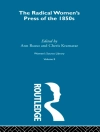An examination of what the translation of medieval French texts into different European languages can reveal about the differences between cultures.
Throughout the Middle Ages, many Francophone texts –
chansons de geste, medieval romance, works by Chrétien de Troyes and Marie de France – were widely translated in north-western Europe. In the process, these texts were frequently transformed to reflect the new cultures in which they appeared. This book argues that such translations, prime sites for cultural movement and encounters, provide a rich opportunity to study linguistic and cultural identity both in and through time. Via a close comparison of a number of these texts, examining the various modifications made, and drawing on a number of critical discourses ranging from post-colonial criticism to translation theory, the author explores the complexities of cultural dialogue and dissent. This approach both recognises and foregrounds the complex matrix of influence, resistance and transformations within the languages and cultural traditions of medieval Europe, revealing the undercurrents of cultural conflict apparent in medieval textuality.
Sif Rikhardsdottir is Professor of Comparative Literature at the University of Iceland and Vice-Chair of the Institute of Research in Literature and Visual Arts.
Tabla de materias
Introduction
The Imperial Implications of Medieval Translations: Textual Transmission of Marie de France’s
Lais
Behavioural Transformations in the Old Norse Version of
La Chanson de Roland
Narrative Transformations in the Old Norse and Middle English Versions of
Le Chevalier au Lion [or
Yvain]
Female Sovereignty and Male Authority in the Old Norse and Middle English Versions of
Partonopeu de Blois
Appendix: Summaries of the Versions of
Partonopeu de Blois
Conclusion
Bibliography
Sobre el autor
Sif Rikhardsdottir is Professor and Chair of Comparative Literature at the University of Iceland.












